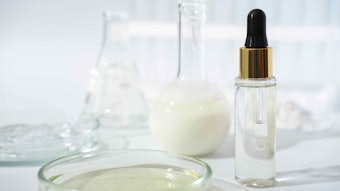This is the third in a series of articles on the function of surface active agents. The first (March 2005 issue) focused on conditioning, the second (July 2005 issue) covered wetting, and this article highlights detergency. The fourth (to be published later this year) will discuss emulsifi ers. The concept of detergency as applied to hair and skin should be well developed and rather simple, but as most things in life, that which appears simple often becomes the most complex.
The properties of cleansing and detergency are supplied to a formulation by selection of surfactants. Almost every paper written about surfactants includes something about the hydrophile-lipophile balance (HLB). The term HLB was fi rst coined by the lab staff of Griffi n at the Atlas Powder Co. (which has since become ICI Surfactants, Wilmington, Del. USA), some 50 years ago. HLB is an expression of the balance between the oil-soluble and water-soluble moieties in a surface active molecule. A more oil-soluble emulsifi er shows a lower HLB and a more watersoluble emulsifi er shows the reverse.
HLB is a very useful method in selecting an emulsifi er, but it has several limitations. Detergents in laundry and in many industrial applications are based upon ethoxylates. The use of alkoxyated nonionics as surface active agents is well known. The ethoxylation of fatty alcohols increases water solubility, resulting in compounds that have both watersoluble and oil-soluble groups.
The system depends on the solubility of the surfactant related to the percentage by weight of the polyoxyalkylene portion of the molecule, and is relatively independent of the nature of the fatty group.










